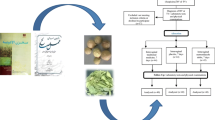Abstract
Objective
To observe the clinical therapeutic effect of Jieze No. 1 (洁泽 I 号) on cervicitis caused by ureaplasma urealyticum and its inhibitory effect on ureaplasma urealyticum (Uu) in vitro.
Methods
A total of 393 patients suffering from cervicitis induced by ureaplasma urealyticum without other complications were randomly assigned to 3 groups, the combined treatment group: 140 patients treated with Chinese herbs Jieze No.1 by vaginal lavage, 30 min each time, once a day for 10 consecutive days and oral administration of Azithromycin, 1.0 g once every 72 h for three times; Jieze group: 115 patients were treated with Jieze No.1 alone by vaginal lavage, 30 min each time, once a day for 10 consecutive days; and the Azithromycin group: 138 patients were treated with oral administration of Azithromycin, 1.0 g once in 72 h for three times. All the patients were treated for 1 therapeutic course and condom were used for contraception during the treatment course. The Uu patients were examined again after 21 days of treatment. The therapeutic effect on cervicitis was observed. The experimental study of Jieze No. 1 on the Uu strain separated from the secretion of the urogenital tract was also observed. The minimum inhibitory concentration (MIC) and minimum bactericidal concentration (MBC) of the Uu were investigated.
Results
The total effective rate of the combined group was 85.3%, showing a significant difference compared with the Jieze group (67.8%) and the Azithromycin group (60.3%, both P<0.01). There was no statistical significance between the latter two groups (P>0.05). The clearing rate of Uu in the combined group was 78.4%, that of the Jieze group was 60.9% and the Azithromycin group was 47.9%. The combined group also showed a significant difference in comparison with the other two groups (all P<0.01). Especially for the drug-resistant strain, the clearing rate of Uu reached 48.1% in the combined group, 42.1% in the Jieze group, and 16.1% in the Azithromycin group, respectively. The clearing rate of Uu for the drug-resistant strain in the former two groups had significant differences in comparison with the latter (P<0.01, P<0.05), while there was no significant difference between the former two (P>0.05). The range of MIC and MBC of Jieze No. 1 to the drug-resistant strain of Uu was 15.62–250.00 mg/mL. To the non-drug-resistant MIC and MBC strain, it was 15.62–125.00 mg/mL. For the drug-resistant strain, MIC50 was ⩽ 31.25 mg/mL, MBC50 was ⩽ 62.50 mg/mL, MIC90 was ⩽ 125.00 mg/mL and MBC90 was 250.00 mg/mL. For the non-drug-resistant strain, MIC50 was ⩽ 31.25 mg/mL, MBC50 was ⩽ 62.50 mg/mL, MIC90 was ⩽ 62.50 mg/mL and MBC90 was ⩽ 125.00 mg/mL.
Conclusion
Jieze No.1 combined with Azithromycin can effectively treat cervicitis caused by Uu. The laboratory study confirms that Jieze No. 1 has an inhibitory effect on ureaplasma urealyticum strain. It has a remarkably effective therapeutic effects on drug-resistant strains, which is worthy of further research.
Similar content being viewed by others
References
Xiao R, Wen HQ, Cao CH, et al. Mycoplasma infection survey and drug sensitive analysis of patients in STD clinics of Hunan district in 2002. J Clin Dermatol (Chin) 2003;32(8):451–452.
Zhang LM, Zhang XM, Sun Y, et al. Sensitive analysis of ureaplasma urealyticum in 283 patients with nongonococcal urethritis (cervicitis). J Clin Dermatol (Chin) 2003;32(8):455–466.
Le J, ed. Gynecology. 6th ed. Beijing: People’s Medical Publishing House, 2003:381.
Ministry of Health of P. R. China. Guiding principle of clinical research on new drugs of TCM. 1993:250–255.
Disease Control Department of Ministry of Health of P. R. China. Handbook of sexually transmitted diseases treatment. Nanjing: Jiangsu Press of Science and Technology, 1990:96–98.
Zou XB, Zhang GW, Yan GF, et al. To introduce one kind of home-made ureaplasma urealyticum culture medium. Chin J Dermatovenerol (Chin) 1996;10(1):454–455.
Robertson JA, Stemke GW. Expanded serotyping scheme for ureaplasma urealyticum strains isolated from humans. J Clin Microbiol 1982;15:873–875.
Weng ZS. Sensibility research of ureaplasma urealyticum on 12 medicines in vitro. J Clin Dermatol (Chin) 1999;28(1):21–22.
Wang YH, Cheng JJ, Chen BM, et al. Determination of Azithromycin in human plasma by HPLC-MS and its relative bioavailability. Chin Pharm J (Chin) 2006;41(1):51–54.
Liu Q, Lu C. Research progress of pathogenicity of Uu in female subgenital tract. Foreign Med Sci: Sect Dermatol Venereol (Chin) 2005;31(5):326–327.
Fu ZY, Li WY, Gao QX, et al. The clinical efficacy of moxifloxacin in treating patients with non-gonococcal urethritis (cervicitis). Chin J Human Sexuality (Chin) 2004;13(12):3–5.
Author information
Authors and Affiliations
Corresponding author
Additional information
Supported by the 10th Five-Year National Science and Technology Project (No.2004BA709B13-02)
Rights and permissions
About this article
Cite this article
Wei, H., Chen, Z., Xu, P. et al. Effect of Jieze No.1 (洁泽 号) on cervicitis caused by ureaplasma urealyticum and on ureaplasma urealyticum in vitro . Chin. J. Integr. Med. 14, 88–93 (2008). https://doi.org/10.1007/s11655-008-0088-2
Received:
Published:
Issue Date:
DOI: https://doi.org/10.1007/s11655-008-0088-2




